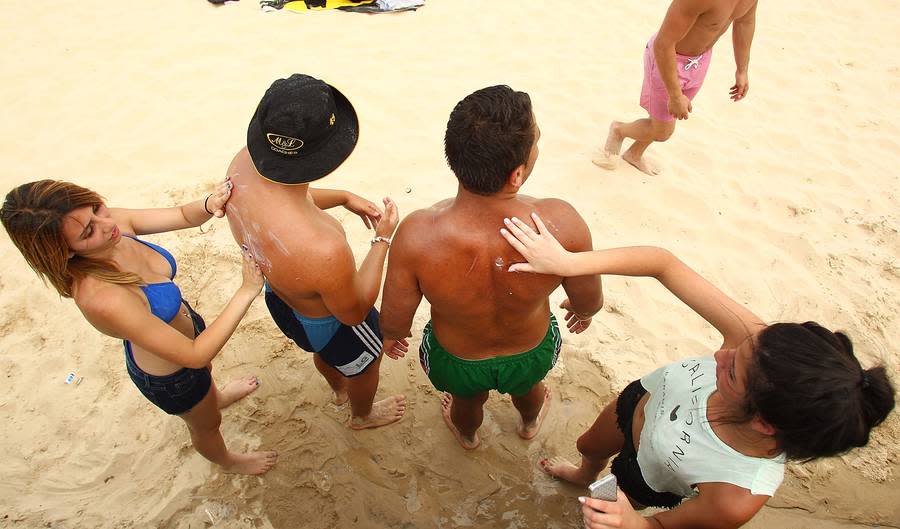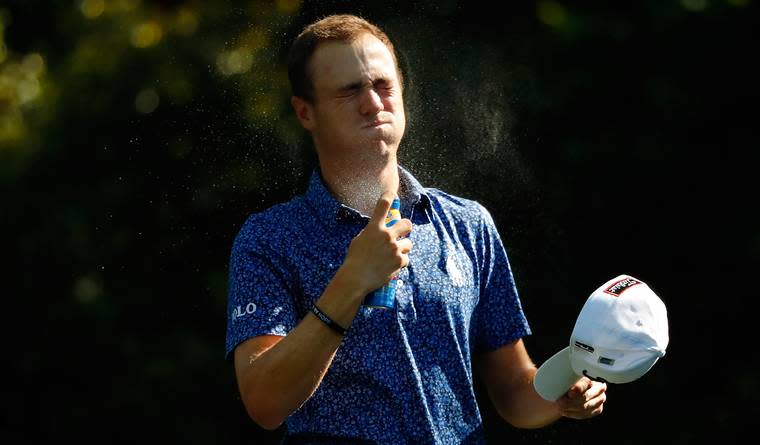Your Favorite Sunscreen Is a Tube of Deception, and SPF Is a Big, Greasy Lie

Photo: Getty Images
You thought you were making your mom proud when you slathered on sunscreen before leaving the house this morning. But it turns out, not all sunscreens are made equal — and some aren’t protecting you as well as you think.
Those are the unsettling findings of Consumer Reports’ most recent Sunscreen Guide, which tested 65 lotions, sprays and sticks with claims of SPF 30 or higher. They also claimed to be water resistant for 40 or 80 minutes.
Consumer Reports’ tests found that 28 of the products, or 43%, didn’t meet their SPF claims — and two products with a claimed SPF of 50 only turned out to be SPF 8. Yikes.
What is SPF, anyway? SPF stands for sun protection factor, and it’s a measure of how well a sunscreen protects your skin from harmful UVB rays, which cause sunburn, according to the Skin Cancer Foundation. If your skin would typically take 15 minutes to redden in the sun without sunscreen, an SPF 30 product would protect your skin for 30 times longer — 7 hours and 30 minutes, in this case.
Believe it or not, SPF ratings have become a controversial topic in recent years. In what seems to be a marketing war, sunscreen manufacturers have been churning out products with “sky-high” SPFs like 85 and 100, according to the New York Times. But those numbers may be pointless.
Even if an SPF 100 sunscreen allegedly protects you for 100 times longer, it can still get rubbed off — especially when you sweat or swim. And when it comes to UVB protection, the difference between SPF 100 and SPF 50 is “marginal,” according to the Times. “Far from offering double the blockage, SPF 100 blocks 99% of UVB rays, while SPF 50 blocks 98%.”
The Food and Drug Administration has proposed capping sunscreen labels at “SPF 50+.”

Back to the crappy sunscreens. To test the products for water resistance and UVB protection, Consumer Reports applied sunscreen samples to participants’ backs, then had them soak in water, according to a copy of the report. Afterward, six intensities of UVB light from a sun simulator were applied to the participants’ backs. A day later, the six spots were “examined for redness.”
To test for UVA rays — which penetrate deeper, and are linked to wrinkles and sagging — Consumer Reports shone UV light through sunscreen applied to plastic plates, then measured the UVA and UVB rays that were absorbed.
The losers: CVS Kids Sun Lotion SPF 50 and Banana Boat Kids Tear-Free, Sting-Free Lotion SPF 50 only clocked in at SPF 8, per Consumer Reports’ findings. This “natural” sunscreen, which claims to be SPF 30, was measured at SPF 14.
The FDA has guidelines for labeling and testing sunscreen. But according to Consumer Reports, “the FDA doesn’t routinely test sunscreens; it requires the manufacturers to test their products. But in most cases the companies don’t have to submit their results, just keep them on hand in case the FDA asks to see them.”

The winners: Not all sunscreens are secretly exposing you to the fiery wrath of the sun. La Roche-Posay Anthelios 60 Melt-In Sunscreen Milk and Trader Joe’s Nourish Spray SPF 50+ both earned a perfect score.
Whatever you wear, the American Academy of Dermatology recommends reapplying “approximately every two hours, or after swimming or sweating."
Of course, you could also just stay inside and binge watch Netflix.
Solve the daily Crossword

